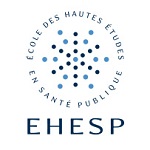Khat use and intimate partner violence in a refugee population: a qualitative study in Dollo Ado, Ethiopia
Abstract
Background: Intimate partner violence (IPV) is the most common form of gender-based violence affecting women and girls worldwide and is exacerbated in humanitarian crises. There is evidence that substance use is associated with male perpetration of IPV. Consumption of khat —a plant containing amphetamines traditionally chewed in the horn of Africa and legal in some countries including Ethiopia—may increase risk of IPV toward women. This analysis aimed to assess perceptions on khat use among Somali refugees in Dollo Ado, Ethiopia and its association with IPV to inform an IPV and HIV prevention intervention.
Methods: A descriptive qualitative study comprising individual interviews ( n = 30) and focus group discussions ( n = 10) was conducted in Bokolmayo refugee camp in Dollo Ado, Ethiopia in October 2016. A purposive sample of male and female Somali refugees, religious and community leaders, and service providers ( n = 110 individuals; 44 women and 66 men) was included. Trained interviewers from the camp conducted the interviews and discussion, which were audio recorded, transcribed and translated. A content analysis was conducted on coded excerpts from the transcripts to identify factors contributing to IPV toward women, including khat use.
Results: Participants reported that displacement has resulted in limited employment opportunities for men and increased idle time, which has led to increased khat use among men as a coping mechanism. Male khat use was perceived to be associated with perpetration of physical and sexual IPV through several mechanisms including increased anger and aggression and enhanced sexual desire. Khat use also contributes to intra-marital conflict as money allocated for a household is spent on purchasing khat.
Conclusion -
Khat use should be addressed as part of IPV prevention programming in this context. Livelihood interventions and other strategies to improve economic conditions, should be explored in collaboration with refugee camp authorities and community leaders as a potential avenue to mitigate the impact of khat use on women and families.
Origin : Publisher files allowed on an open archive
